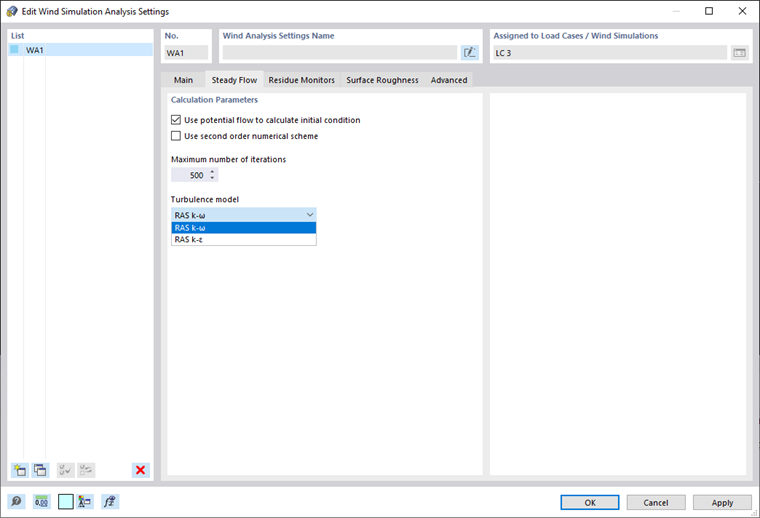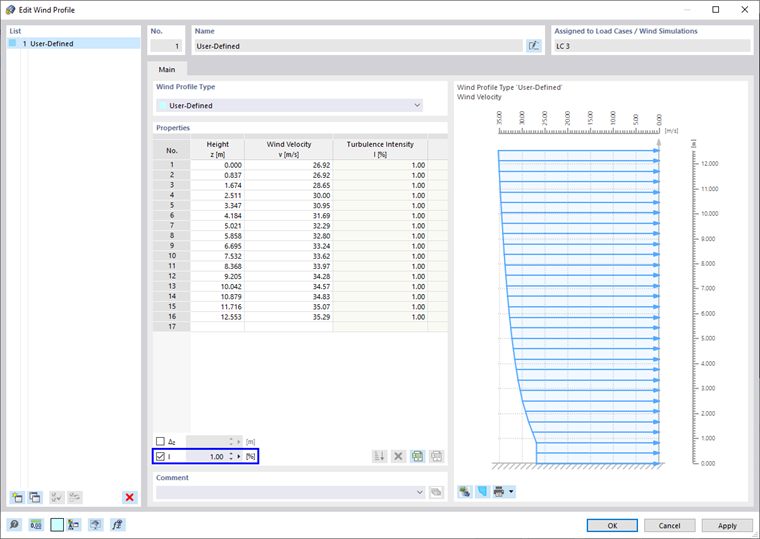This tab is available when the Steady Flow simulation type is selected on the "Main" tab.
Calculation Parameters
When you activate the "Use potential flow to calculate initial conditions" option, a linearized version of non-viscous Navier-Stokes equations is used to generate the start conditions.
The "Use second-order numerical scheme" option controls which numerical scheme is used for divergence terms (fluxes). It is not activated by default so that the calculation is carried out according to the first order. The first order numerical discretization generally yields better convergence than the second-order scheme. The second-order discretization is usually more accurate, however.
The "Maximum number of iterations" does not mean that all iterations actually have to be carried out: If the calculation converges with fewer iterations, it is stopped. This option can be useful to avoid infinite loops or apply short calculations for testing purposes.
The "Turbulence model" list is available when the "Consider turbulence" option is activated on the Main tab. By default, the "RAS k-ε" turbulence model is set. This means that the parameters k and ε (or ω, depending on the selected model of turbulence) are determined automatically from the global turbulence intensity I value defined in the Wind Profile dialog box. The Turbulence kinetic energy k represents the mean kinetic energy characteristic for eddies that is produced by fluid shear or friction. The rate of dissipation of turbulence energy ε describes the deduction of energy due to the airflow.
For detailed information on turbulence kinetic energy, see CFD Online.

